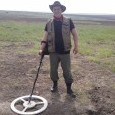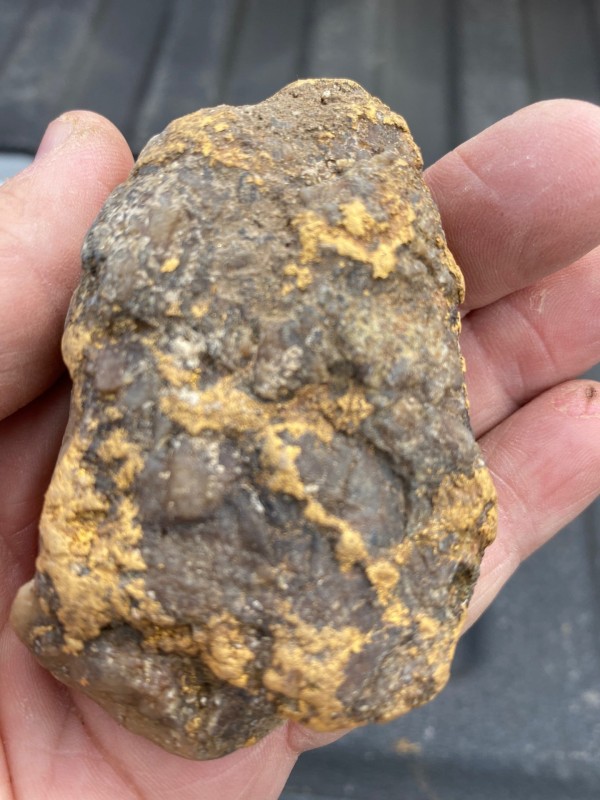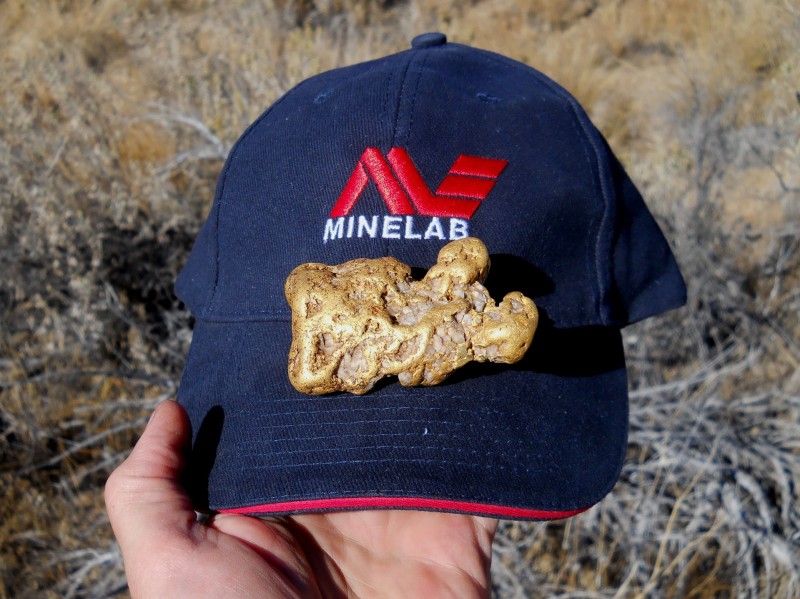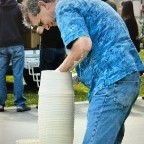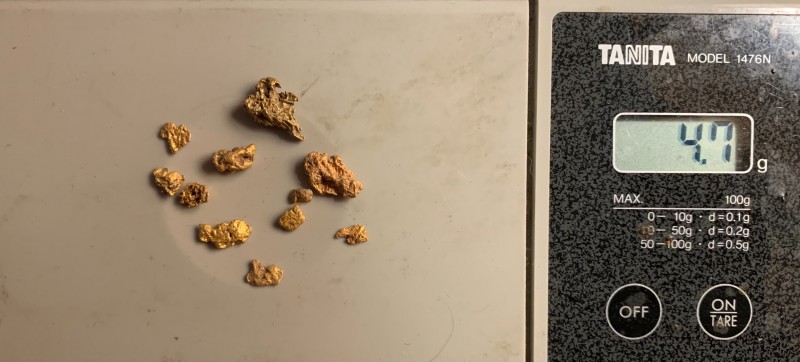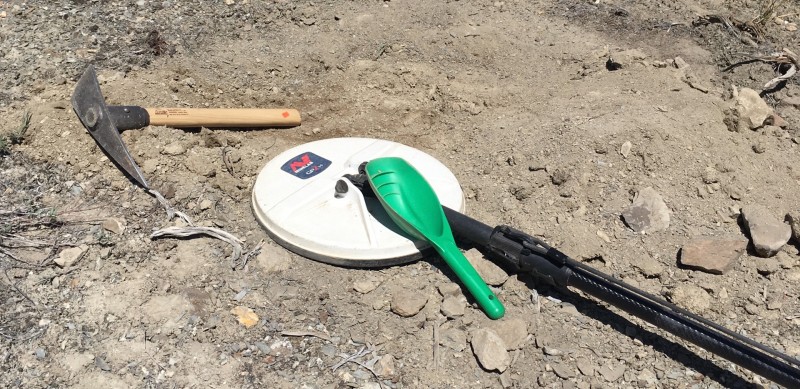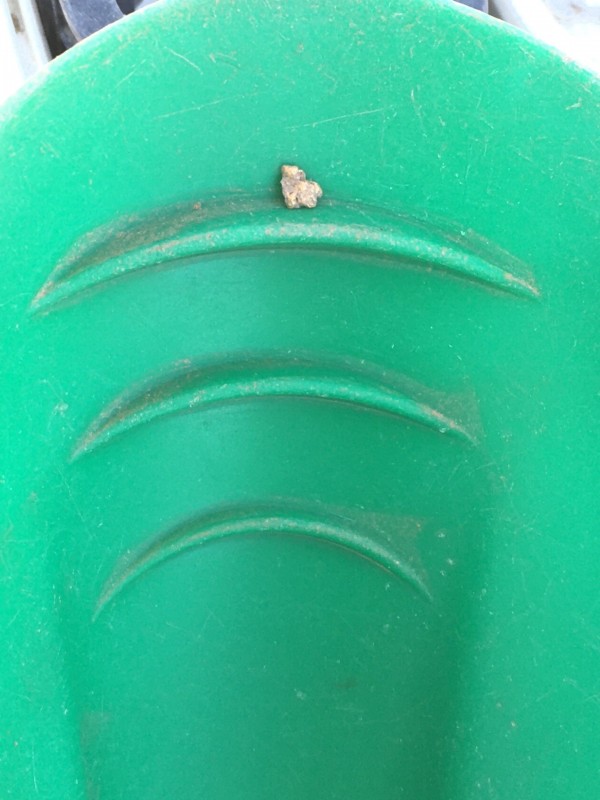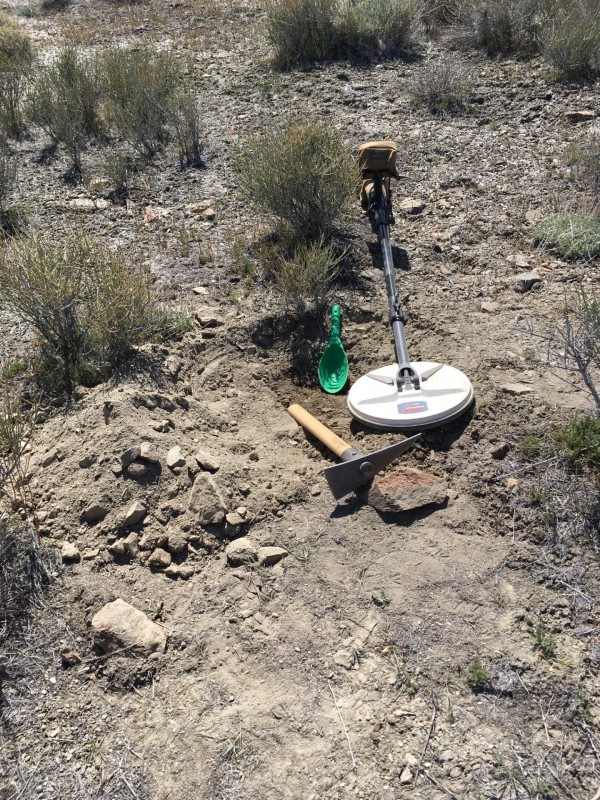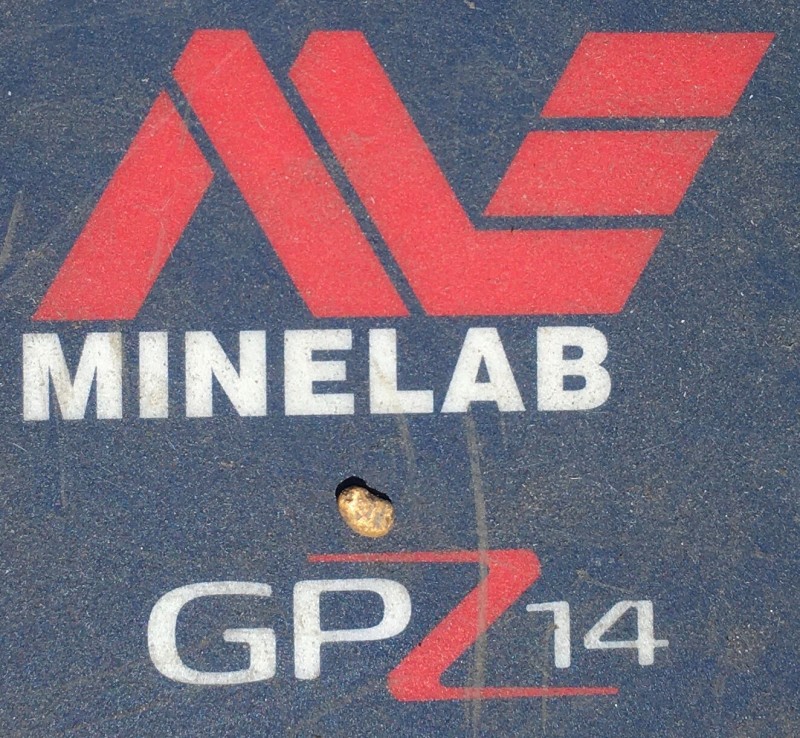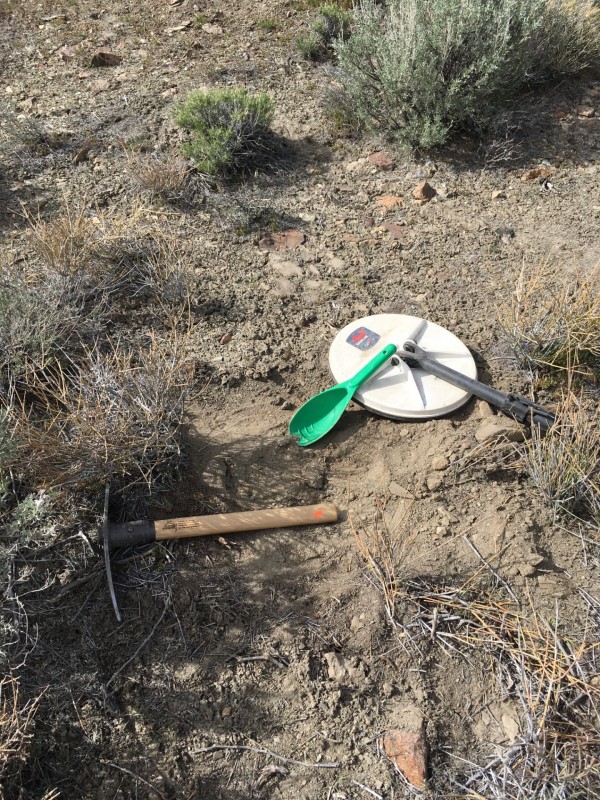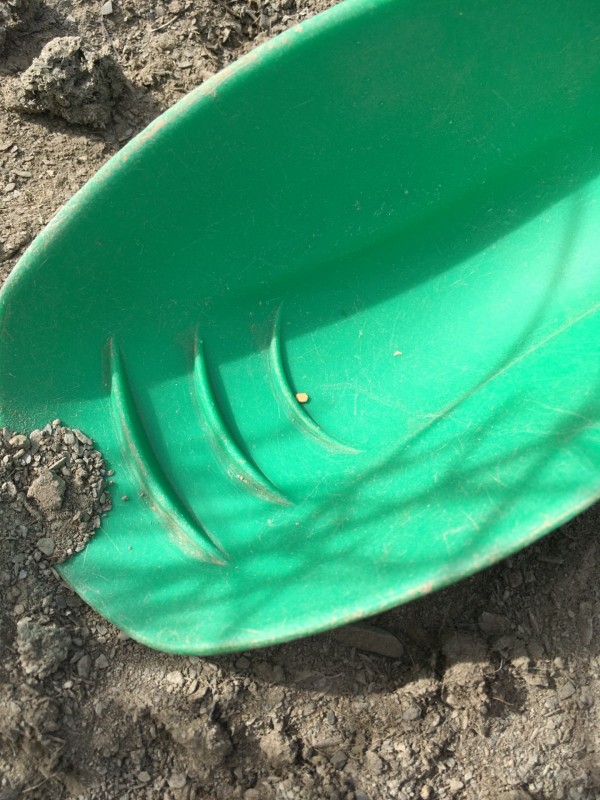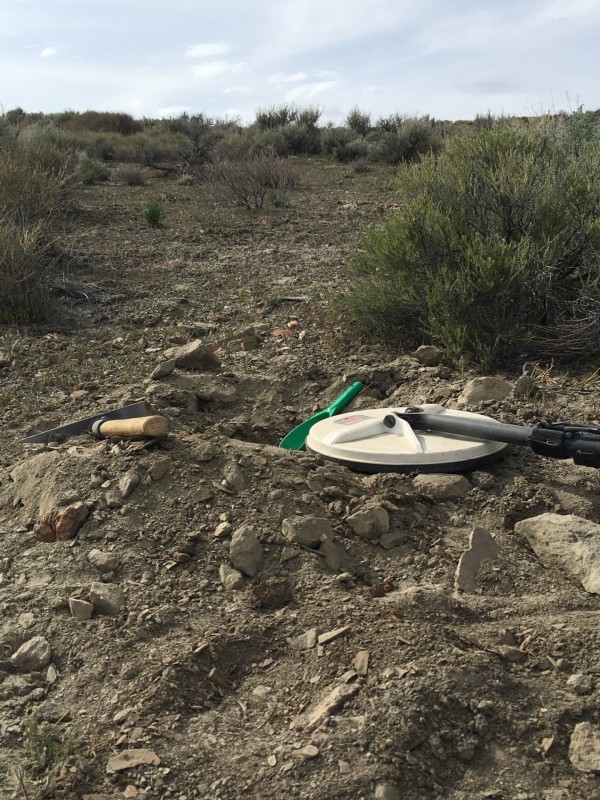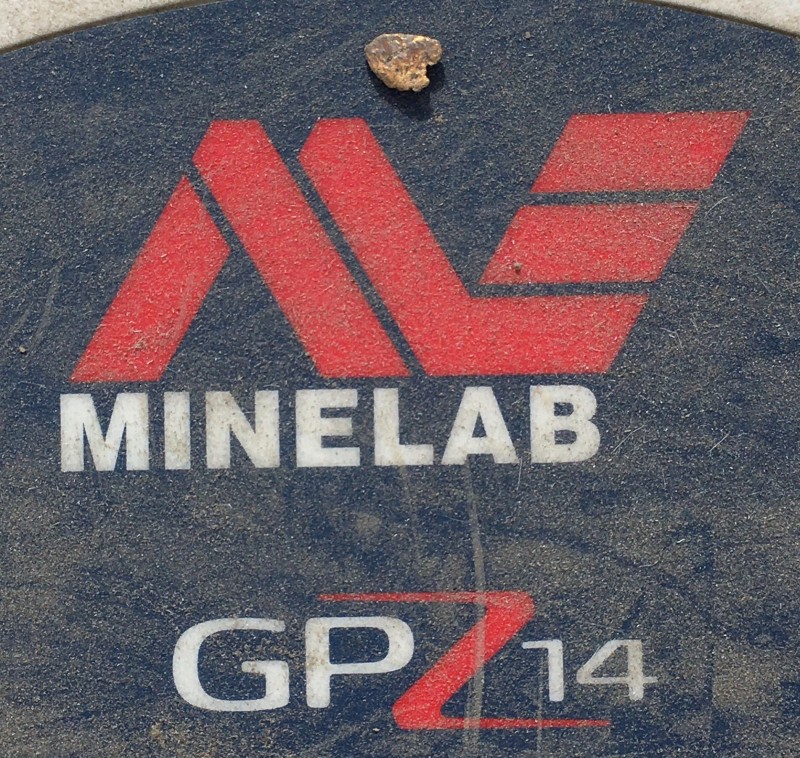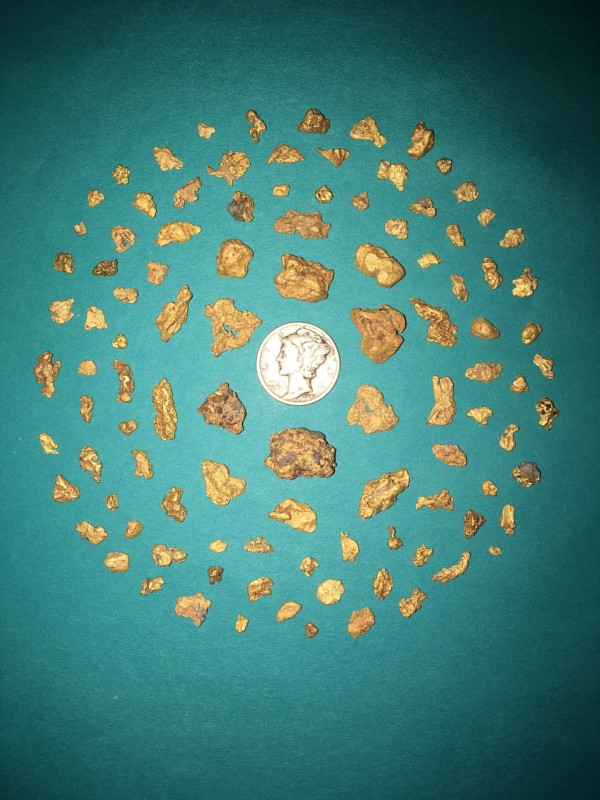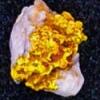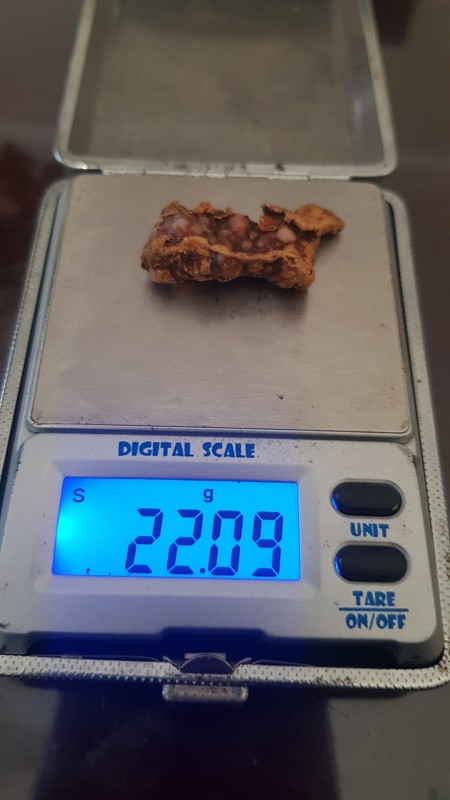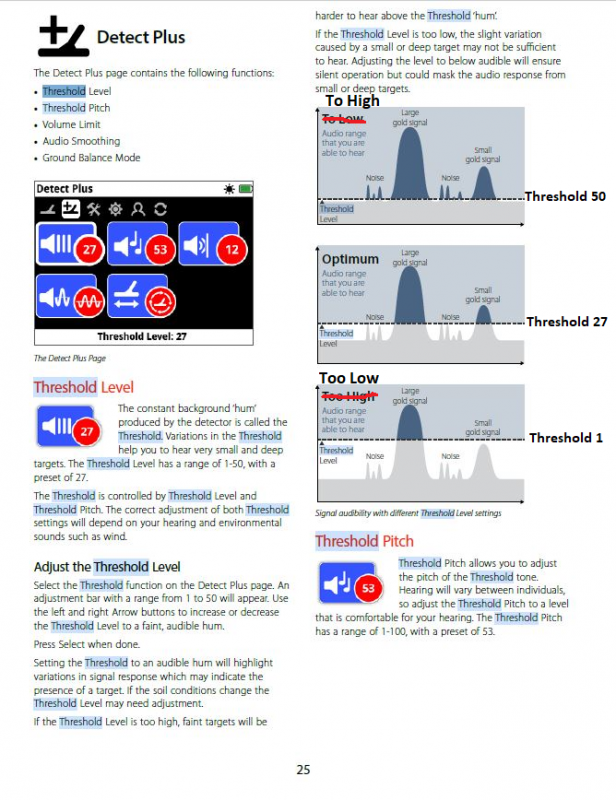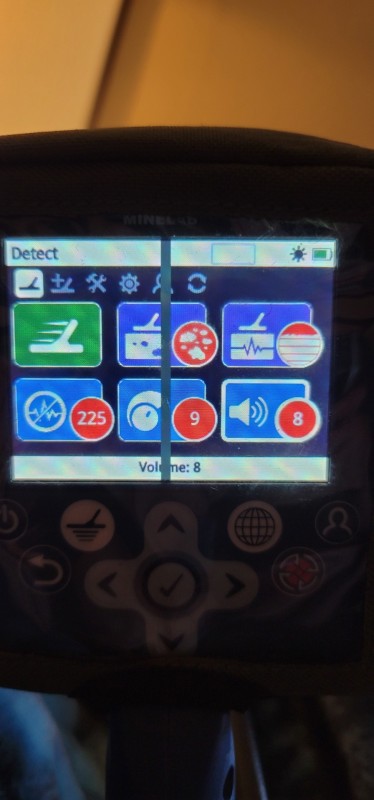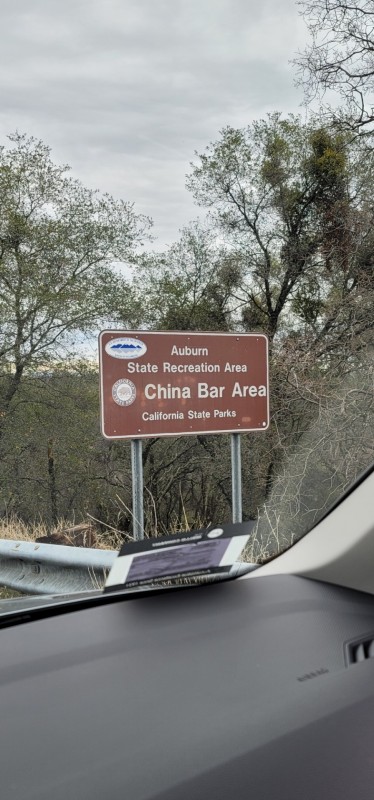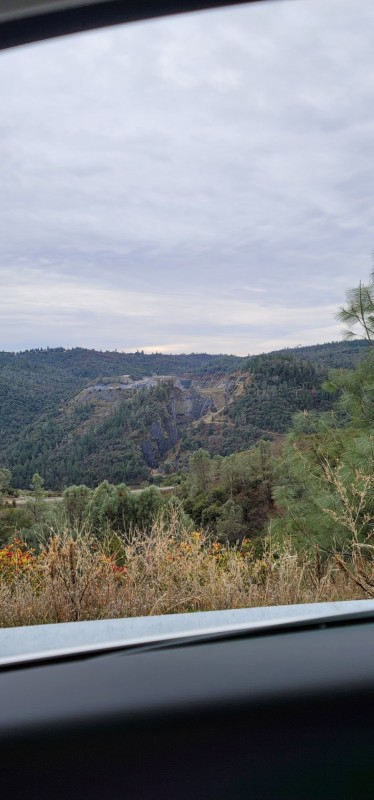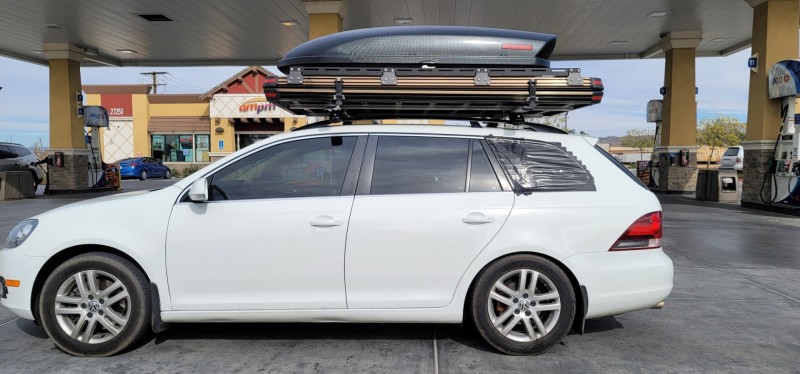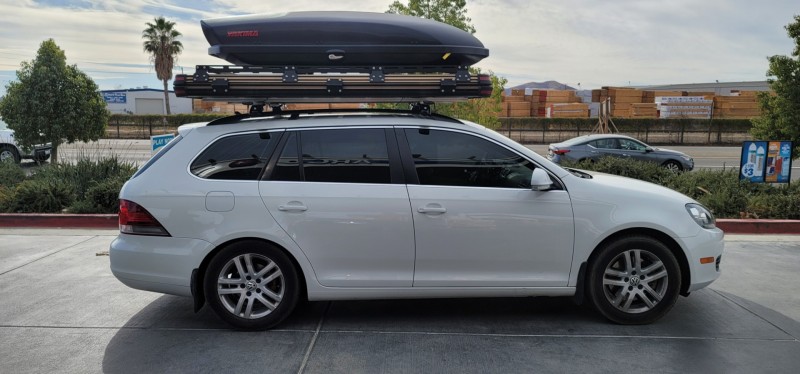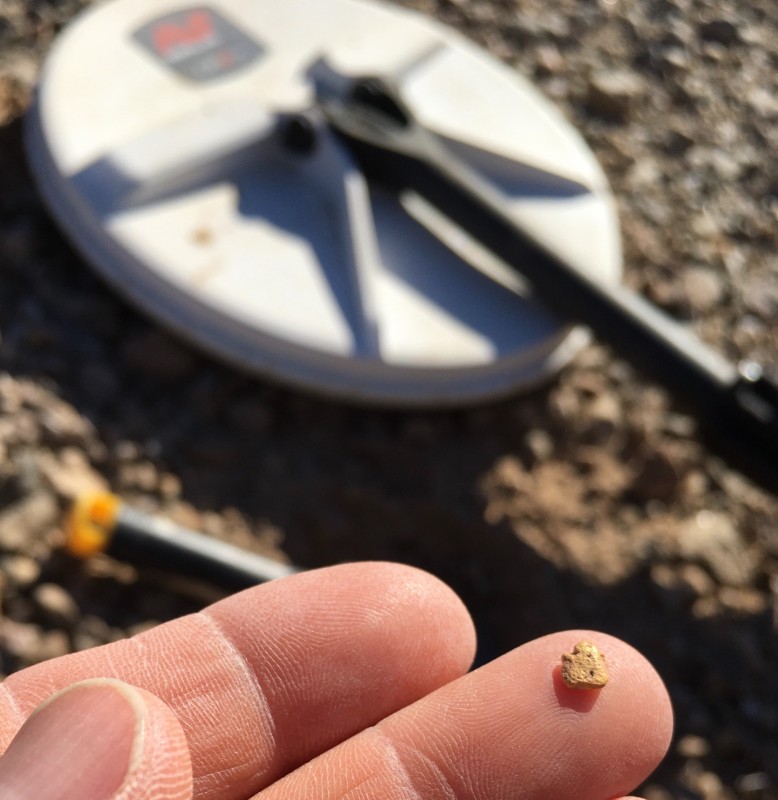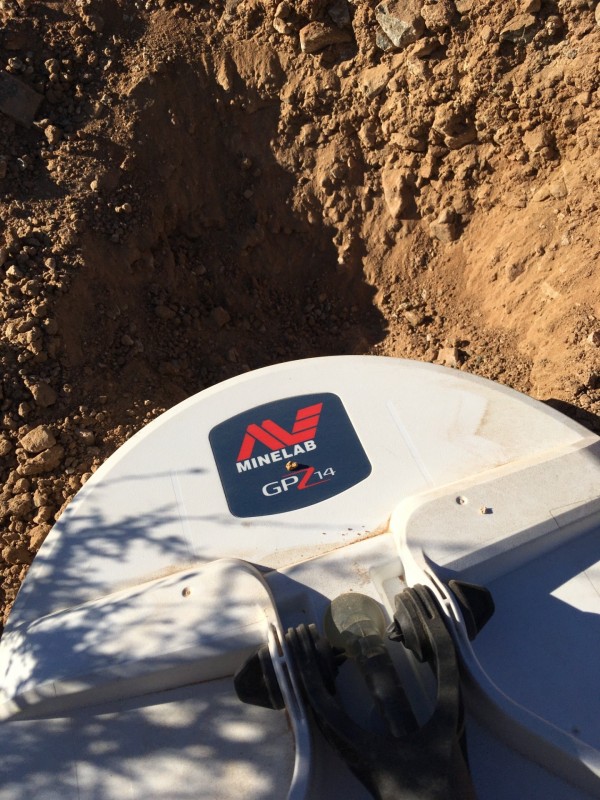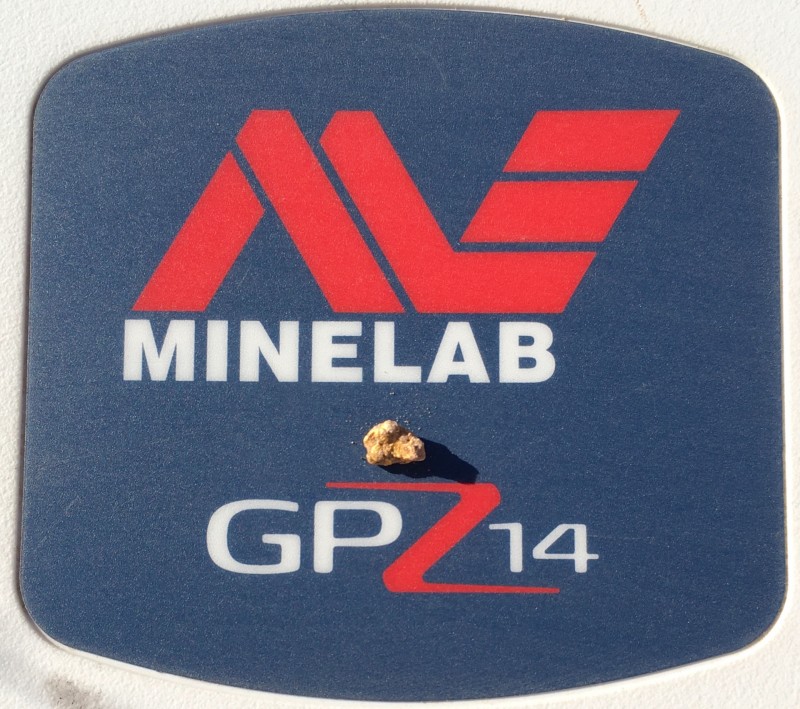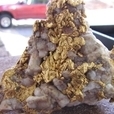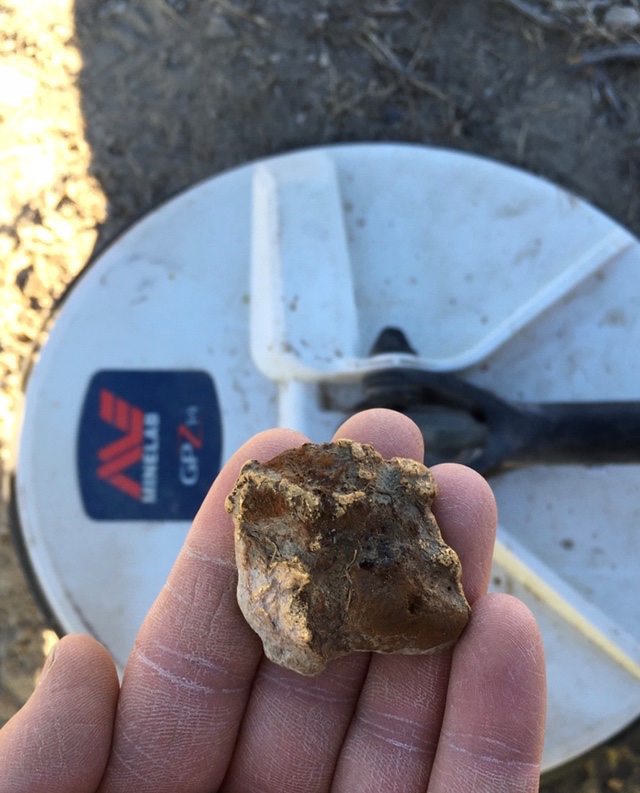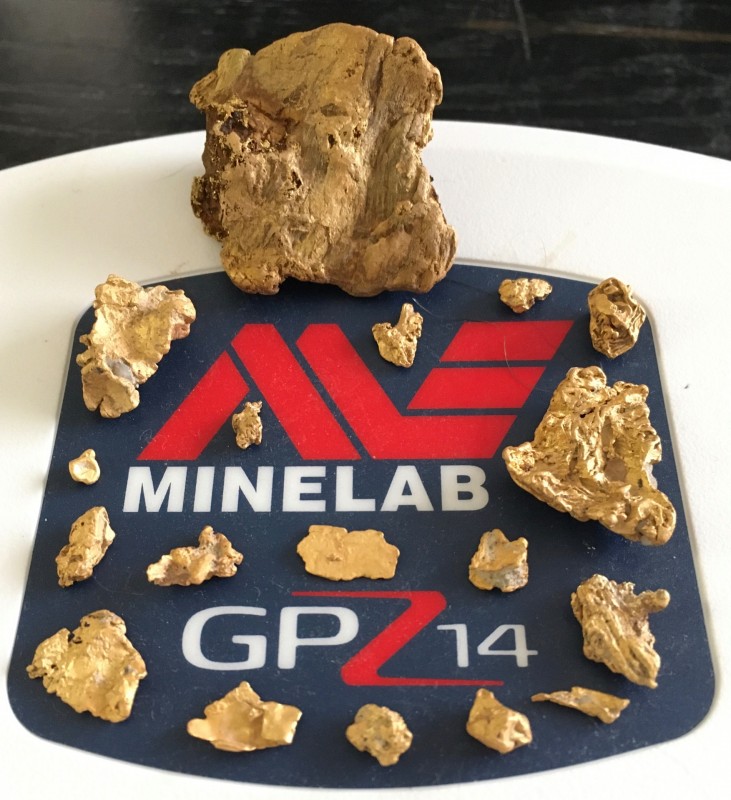Search the Community
Showing results for tags 'minelab gpz 7000'.
-
Has anyone had any issues with their coil chip failing? l bought a second hand 19” coil for my GPZ and it worked fine for several months and then out of the blue, it failed. Minelab suggested that I buy a new coil. After a bit of research I decided to have a dongle made up from my 14” coil and now 12 or so months later the chip in the dongle has failed. Am I doing something wrong? Is there a problem with the detector or am I just very unlucky?
-
Hello gentlemen, finally someone from the Australian guys made an honest comparison
-
Hey Guys, I figured we can stir the pot just a little while we wait out the release of the Minelab GPX 6000, right? That being said, Minelab still claims the GPZ 7000 can get "up to 40% more depth" over previous GPX detectors. We can all question, does the GPX 6000 still fit in this category, as Minelab stated GPX detectors. The upcoming Minelab GPX 6000 is still a GPX series detector, but primarily using GeoSense Technology. I don't see where GeoSense really talks about any more depth ability over the previous GPX 5000, but it does mention about better ground response/clarity, maybe allowing you to hear something in higher mineralized ground over previous GPX series. I don't claim to be an expert electronic prospector, but my specialty is in detecting for gold nuggets with the best detectors available. We call all talk about how much gold we found, years of experience, regions we hunted and such ..... The bottom line is I still feel the Minelab GPZ 7000 is the KING of detectors when it comes to depth. Many Australian, African and US prospecting friends still feel the same. I personally have found many large gold nuggets and specimens at max depth where I doubt any detector with a similar sized searchcoil would have found. I also know that probably 1% or less of those large gold nuggets/specimens are out there still and the ones at max depth range of the current detector technology. Does this justify the purchase of a Minelab GPZ 7000 over the upcoming GPX 6000, or should GPZ 7000 owners dump their units now? These are questions I personally can't advise anyone on, but it's something to consider when you make a purchase of a metal detector in the thousands of dollar range. What I can leave you with is my personal experience over the last 25 years chasing gold nuggets .... If you are in areas where there has been historically large gold nuggets, overburden to bedrock/paylayer/caliche/false bedrock that can be several feet and deeper in depth, you might seriously consider either holding your current GPZ 7000 or consider a purchase of one at some point. I personally will not be parting with my trusty GPZ 7000, we have a 5+ year personal relationship. We have been through tough times, bad weather, I even yelled at her and dropped her a few times! Like Steve mentioned before, you could actually fall in love with your detector. Wishing you all much success with whatever detector(s) you swing. P.S. Below is a recent GPZ 7000 find, max depth, just a break in the threshold (yes the GPZ 7000 has one). Nearly a pound in weight (uncleaned in picture) Rob
-

Making The Move From GPZ 7000 To GPX 6000
Gerry in Idaho posted a topic in Detector Prospector Forum
I've read a few posts from those who have both and their input is pretty much what I expected. Having fun (especially with others) is the majority of why I enjoy detecting. Only a select few actually do it for a living and do well. The rest of us (me included), enjoy the hunt, adventures, comradery with like minded friends, and getting some gold on occasion. It's looking like the GPX-6000 is getting the majority of gold better than the GPZ-7000. So, is the extra weight worth the rare occasional big nugget? Lets go a step farther. Say the ZED hits a 4 ounce nugget at 34". Will the 6000 hit that same nugget at 30", 32" 33" or 34". Say it's 2" less and only gets the chunk at 32". It's still near 3' deep which is deeper than most folks enjoy digging and or most other detectors out there. So the reality for most folks, the GPX-6000 at a cost savings of $2000 and over 2 pounds lighter, better ergonomics, no more tethered into a harness, more user friendly, real wireless Bluetooth phones, is the best option for most. Like I said in another post. There should be a convoy of GPZ users heading down the highway to get the new GPX-6000 and having more fun, more gold more often. I can help make that smile happen. Anyone have a point I am missing or totally off, please chime in. Pic of the nugget will probably only be a few inches in depth difference between the 6 and 7. But the majority of us would probably hear if with both machines at 30 or more. -
If this has been posted here already I missed it, sorry. But, wow...
- 13 replies
-
- minelab gpx
- minelab gpz 7000
-
(and 1 more)
Tagged with:
-
It’s exciting when a new detector emerges, none more so than a new top notch gold getting machine from Minelab and the new GPX 6000 is as exciting as it gets. Just a little reminder about the virtues of the GPZ/14” an older brother he may be a little thick in the middle but this heavyweight can still sniff out a few crumbs in the pounded terrain in the desert of Gold Basin Arizona, from a few recent hunts.
-
I am starting this thread to ask the folks who have used both to give their thoughts, opinions, comparisons and experiences with both. I have only seen JP and Rob post on the Nugget Finder coil and have only seen it in action on the Outback Gold Fever Channel. We all know that the 6000 blows away any competition with weight and ergonomics, but would still like to know if it gets any closer to this with Z and the 12”. Performance wise is really what I am after and these two sizes are only an inch apart, but 2 different techs. I am on the fence, do I buy a new coil for my Z or sell/save for a 6000? I am truly in the middle on this based on my terrain, age and gold I am after. My terrain: is the woods and broad gulches. There is always overburden and vegetation so I need the power to bust through that to get to the start of the bedrock erosional surface and hopefully close bedrock. However, wearing a harness does not work and is cumbersome for detecting in this environment, its never flat so you never feel the help from a bungy, its pointless for this area. My age: is 45 and I can go about 5-6 hours max before being whipped, thats not just from detecting but digging and hiking in and out too, so I know as age goes on the hours will be less but new tech could come out too. My gold: is sub grammers, that is the majority. We have hit larger pieces but the bread and butter is sub grammers and the Z is getting them through all that overburden but I am not sure if the GPX6000 would. So my “dream” detector would be ZVT tech in a compactable SDC form with interchangable coils, light and ergonomic. Is that to hard to ask? 😂😂😂😂 So, in the interim, it’s either a lighter coil for the GPZ that supposedly is more sensitive and can get a little deeper and reduce the weight for non bungy users OR a new detector that is lighter, that is also more sensitive at least on surface gold, that we have seen so far, but has the possibility as more reviews come out to see if you can actually hit small gold at depth like a GPZ. Can’t have both, the coil I could afford, The GPX would require selling off the Z. I also don’t have the ability to drive to the closest dealer that would have both in AZ. Thats a two day drive one way. So please, if you may, would love feedback on this vs the two. In the end it sure helps me out and probably many others too. Thanks!
-
Well I'm laying over in northern Nevada for some detecting before heading back to Idaho and my summer job, and decided to go revisit an old dink patch with the GPZ 7000 this afternoon. Since I've hit this place pretty hard, I figured I better use a higher sensitivity setting to see if it would light up some bits that were missed last time using a lower sensitivity that helped keep the alkali rich ground feedback under control. Needless to say, I had to move the coil painfully slow over the really noisy areas, but the extra sensitivity started working its magic right away, as I got a faint but repeatable little wobble. Digging down about 3 inches or so revealed the first little bit of yellow. 🙂 Soon there was another signal a few yards upslope; another shiny golden bit, this time a little deeper. I couldn't help but wonder at this point how much deeper the new GPX 6000 will be able to snag dinks like these, and how many the Zed is leaving behind. 🤔 Guess I'll find out when I finally get mine. Just then I was awakened from my wonderings by a sharp response from the Zed; sounding pretty shallow, the tiny target was out from under a bush with just a boot scrape. And I mean tiny! One more golden goodie sitting on bedrock ended a splendid, sunny afternoon in the goldfields. Total weight of todays finds, zero point six of a gram. Good luck out there!
-
Just the other day, I reached my goal of digging 100 Arizona gold nuggets with the GPZ 7000 this winter. Nothing of much size - the largest weighing in at only 5 grams - but even the tiniest bits are a thrill to find. As usual, I was targeting well known and flogged placer areas, working in and around the old dry-blow diggings. All up, 1.78 ounces troy. It will be interesting to see how much the GPX 6000 increases the number of nuggets found in this size range next season...only time will tell. Good luck out there!
-
As far as a carry case, Beatup came up with a great idea for the 7000. It's a double snowboard bag, 158cm fits the collapsed 7000 perfect. Not a hard case mind you, but it's padded with waterproof luggage type exterior and heavy duty zippers. It offers some protection bouncing around in my RZR, I bungee it to my overhead rack so there is still room for all the other gear in the rear compartment. I'll try and find the website if anyone is interested.
-
- 3 replies
-
- 11
-

-
- coils
- minelab gpz 7000
-
(and 1 more)
Tagged with:
-
Hey All. I have been researching this last month or so throughout Detector Prospector, Minelab's Knowledge Base and TreasureTalks so that I can take my skills with the GPZ to the next level and I think in order to do that it involves these 4 settings: Threshold, Sensitivity, Volume and Volume Limit. A lot of forum members talk about these comparing and contrasting, but none really give you a "How to." How do you go about adjusting these to reach perfection, to reach that perfect ZVT zen. Conclusions that I have read are that: it just depends on what you want to hear, or how you hear what is coming out of the detector. OK, but I think it is more to it than that, and if you don't understand what these controls do how can you really achieve the best results. Keeping these setting the same. Noise Canceled. Gold Mode: High Yield. Ground Type: Normal. Ground Balanced with Semi Auto. No filters - Audio nor Ground Smoothing. Lets talk about how we start. Here is what I have researched and summed up describing these controls. These are my "interpretations" based on everything I have read and I think I really have a grasp on it now. This information and dissemination of it came from everyone here, and I mean everyone! Huge Thank You! Sensitivity: aka Gain. Control of the INPUT "strength" of a "sound wave." You don't actually control how "sensitive" the coil is. ZVT is ZVT, that is the tech we are using In order to understand these controls I think of it like a "sound wave". What you control is the "sound wave" coming into the machine. Too much gain and you over modulate the sound wave, cause distortion, and increase the "noise" level. Too little gain and your "sound wave" is decreased (like making it a flatter line) maybe allowing large "sounds" to come through but in return lowering the "noise" level and small "sounds." In Sensitivity is where you want to produce the "perfect sound wave" coming into the machine. You want that sound wave to just barely reach below a distortion level to get the best "sound or tone" Threshold: This is how much of the "noise" level you want to hear. It kind of acts like a bottom or "noise" filter. Increase threshold (lower number on GPZ) and you filter out more of the "noise" level as well as small "sounds." The opposite is to lower threshold (increase number on the GPZ) to filter out less of the "noise" level and hear smaller "sounds." These two setting should play off of each other so that you can achieve the "biggest window" for the ZVT "sound wave" to operate in with the least amount of "noise". Some people use a 20 sensitivity and a 7 threshold. Is that the biggest window they could achieve? Some do a 15 sensitivity and a 27 threshold. Is that the biggest window they could achieve? How come you could not do a 1 sensitivity and a 53 threshold? Nobody has ever commented on that. Boost it? Probably not a good idea. I don't know, never tried. Food for thought, but I hope you get what I am saying about that. In my eyes these two controls are where you should start. Achieve the biggest "window" that ZVT can work with. If you minimize the window you are not taking advantage of the full technology. In turn you are probably not finding the smallest pieces you could achieve or the greatest depth on targets. Don't limit ZVT, maximize it to its full potential. Open the window as far as you can for the ground/mineralization you are in. Now on to Volume and Volume Limit This is where I do not have the best grasp on these controls, even after all the research I am not sure if I am describing these correct. So many people play off of these and have different explanations. This is what I "think" they mean. Volume: aka Audio Boost. Control of the OUTPUT "loudness" of the Threshold and Sensitivity window that you just created. We are told that this acts like an audio boost and that increasing this by one is like increasing Sensitivity by 2, etc. I don't think that is a good way to describe it, at least for me. What I think Volume is doing is increasing the loudness of the "window." Than includes the "sound wave" as well as the "noise" associated with it. If you can not hear the targets you want after adjusting your "window" above, then you need to boost the audio. Doing this though will increase what you hear in "noise" and I "think" this is why some describe this as equivalent to increasing Sensitivity but it is not. The "window" has already been set with your Threshold and Sensitivity, what volume does is change the OUTPUT "loudness" and there by multiplies how big the window is ("sound wave" and "noise"). This allows you to hear hear more, but more of EVERYTHING, in affect increasing overall loudness. This is why it should be used "conservatively." Start at 1 and work up until it is where you "like" hearing it. This is the part that should be subjective to each individual and their hearing. Volume Limit: The Big Mystery. What does this do? How does it help me? Some say that this is actually volume. Some say this is what you should adjust to hear targets better. Some say it is just there to not blow your ear drums off if your volume is set to high. My questions are: Does this affect the "OUPUT" signal or the "INPUT" signal or both? Why would I want a Volume Limit? My thoughts on this...... I think that Volume Limit sets the MAXIMUM Volume (Audio Boost) "level" that can be used. I don't THINK it limits the Sensitivity. So this is an OUTPUT control. Therefore if you set the Volume Limit high you would get a higher (louder) incremental step with each number in Volume (Audio Boost). If you use a lower Volume Limit, you would have lower (less louder) incremental steps in Volume (Audio Boost). So if you want more precise control of your Volume (Audio Boost) you would set a lower Volume Limit. The trade off is maximum loudness. If you need to hear things louder you are going to have to raise your Volume Limit and then adjust your Volume (Audio Boost) accordingly. My thoughts are that people think this actually raises the volume but in the end if you keep Volume (Audio Boost) at 8 and increase Volume Limit, it will get louder per se because you just raised the the maximum loudness level there by increasing the loudness steps for each Volume (Audio Boost) number. Make sense? It does to me, I hope I am right otherwise I am gonna have to relearn this all over again 😉 Well now I need feedback from you all. Am I out in left field on all of this? Am I spot on? Or do I just need some minor tweaks? 🤣 AND if you have the desire to help some, could as many folks as possible make a video of them adjusting these settings to achieve a perfect balance? These are the videos that are missing on YouTube, etc. We see tons of people digging up gold but not many at all on "How" they use and set up their machine. This would be huge to see. You don't have to make a fancy video, maybe just have someone with their phone over your shoulder while you go through it. This would be a huge boon for a lot of people, including myself. Especially us that have to stay in all winter and have to wait to test their own theories. 🤣 So any help in that regard please post! OR if you already found some vids, please share. I have tried every search I could to no avail. Anyways many members on here have said it before. You need to learn your machine. Its only one aspect of being an expert detectorist. I know I am not there yet cause it sure looks like I am still trying to learn my machine. The rest for me seemed to have come easier, researching locations, reading locations, putting the coil over the gold, etc. Now I NEED to revisit a bunch of locations where I got the easy gold by just using preprogramed settings that I learned when I just started. I started detecting at the SDC level. Turn on and go. I never had a GPX so comparing to the old never helped me. I am part of the new school of detectorists and I don't want to be ignorant by having less control. I want to take control. Its time to achieve ZVT zen and see what was left behind. Its time to level up.
-
I have had this problem recently except it happened when switching gold or ground modes. I was switching back and forth to check target signals and lost all audio. It has happened twice and both times i have had to power off the Z to get the sound back. 🤷♂️ I have also noticed that my buttons don’t react that fast. I could fly through the buttons much easier if it would not take a full second or two to switch modes or select things. Is this normal? I have no one to compare this with. I had my GPS fixed under warranty and asked to have my screen changed out since it was scratched, in the process they replaced the front panel, I could have swore it worked faster before they put a new one in. No warranty now. Maybe a hard restart or factory reset is in order and reinstall the firmware? 🤷♂️
-
I have had GP machines from the Extreme to the 4500 and nothing has EVER broken despite thousands of hours in the field being banged around, in the back of my pickup and on ATVs over rough trails. I noticed that my GPZ has started rebooting and loosing it's current setting whenever I lay it on the ground. I have used one of Docs protective covers since I bought it. I took off the cover and found this: It appears that one of the pins that holds the battery in position has sheared off likely causing the reboot issue: Luckily the broken pin was still in my big Minelab protective bag: I'll try to epoxy it back on and treat the detector as if it is made of glass from now on. I'll admit that I have occasionally let it drop to the ground from a foot or two when going to dig a target. An apparently very bad habit I acquired when using the GPs. No more.. I'll see if I can fabricate a pad for the broken stand since I don't see this part available from ML separately. I bought the machine used with about 10 hours of prior usage, so no warranty for me. Just posting this so you guys won't have the same issue.
-
I’ve done a bunch of research online and I just can’t seem to find this. Does anybody know if there is a detailed video on each of the menu items/settings for the GPZ along with examples in real world environments? I realize that when I’m out in the field now, after continually reading this forum, that I kind of stick to the same settings that I’ve been using for a long time (except for changing between high-yield and general, as well as normal and difficult). It’s winter time, I am bored and I’d like to learn more on my GPZ 🤣🤣. Even if this is not a YouTube video and it’s some thing I can purchase I’d be willing to do that as well!
-
For years I ran the GPX 5000 Threshold setting with a faint audible level by following the book; which is condensed as follows; Through a process of dynamic noise compensation, Smart Electronic Timing Alignment (SETA) ensures that the threshold stability is improved and maintained, allowing you to operate the GPX 5000 with maximum efficiency under all conditions. Threshold is the constant audible background hum or noise produced by the detector. On the front panel rotate the variable Threshold control to achieve a very faint but still audible noise level. It should be smooth with only minor fluctuations. The Threshold is your reference point and lets you know what the coil is sensing, whether it may be a target, ground noise, or electrical interference, so it is important to set the threshold so it can be heard. When a target is detected, the Threshold changes in volume and pitch. Listen to the threshold carefully. Concentration is an important part of detecting. A very deep or small target may only cause a very small change to the Threshold noise. Listening for a target signal with a high level of Threshold noise would be like trying to hear a whisper within a crowded noisy room. A high Threshold may also be uncomfortable to your hearing. If the Threshold level is set too low (less noise) very soft target signals, from small or very deep targets, may not be heard. It is important to reset the Threshold level as conditions change. For example, your ears may adjust to the low levels of audio after an hour or so, or the conditions may have become windy. So here are my concerns; With the GPZ 7000 I find it difficult to achieve the low quiet hum of the GPX 5000. I get the trying to hear a whisper within a crowded noisy room effect. The constant high noise level makes it difficult to listen for small changes that would indicate a small shallow or large deep nugget. So I tend to run it far below the default setting of 27. And much of the time I run at a setting of 1. Another problem is related to the control differences between the two machines. The GPX 5000 has a simple variable Threshold control with no numbers to be concerned with. The GPZ 7000 has digital values which appear to be inverted in function. Attached is an edited illustration from the GPZ 7000 manual that displays my view or understanding of how it should be described.
-

Woke Up To A Nightmare: Gpz Screen Ruined?
Robert Eaton Jr posted a topic in Minelab Metal Detectors
Hey everybody. I've been working my butt off to try to get ready to go find gold.Sometime seems like one step forward two steps back. A week and a half ago I was at the bottom of gold hill outside Virginia City, testing out the GPZ in the gold monster with my wife and kids, and when we put all the gear away I had my keys on the minelab vest, and stupidly locked them in the back of our car right at sun down. Being off the beaten path, and having to work had no choice but to smash my rear window to get the keys and get my family out of there. Just so happens that rear window is more expensive than my windshield at 500 plus dollars :-(. Had to look of finding a free spirit Odyssey 45-in tent for only $2,000 near San Diego. Went down and picked it up, only to find out that the so-called towing Springs that I thought I ordered, and we're actually tihuan springs for a golf, and not the towing Springs that I thought. My mistake ordering them, now my car sags, and I've got a cough up another $160 and change the Springs myself. Times money. To make things even better, on the way back through the Mojave desert my heater core went out. Fortunately it's got a CPo warranty, unfortunately I can't trust the local dealership so I have to drive to Sacramento to have the dealership fix it, luckily it's only 50 bucks. And that covers this sway bar bushings too which are bad. Yesterday I spent all day delivering doordash checking out Auburn and a little bit placer County. Forest Hill road and some other spots. Found an awesome mining store in Auburn. I like to get back today to metal detector it caught a land where I saw people excavating for a new home in placer County. I've got to work my butt off to pay off these bills, I hope I could get one or two hours. I had went to Cold Springs to get some Paydirt with my wife from the bedrock that was exposed. So far I found tons of iron. Bringing it home to our kitchen, where I spent about an hour and a half learning to pan for the first time. With a five bucket gallon, it took me about a good hour to find a good rhythm. Wow am I a slow panner:( I'm working on it, ordered some classifiers, and realized I need to get a sluice box or something to make that process go faster. I totally don't have any cash left to do that though... So I also wanted to figure out how to make my GPZ and gold monster operate better where there's tons of iron. Sitting in bed right now I was just trying to set my machine with Steve's super hot settings, which apparently were not as hot as the ones I was running, when the ultimate nightmare happened. Not even dressed, GPZ in my arms, I can see a gray line going down the center of the screen. Un freaking believable. I hardly used my GPZ yet. Not the hundreds of hours required. I've never dropped it I have no idea how this happened. Every free second of my day I try to spend looking for gold. there's no way I could afford to part with it for a couple months to send it to Australia. I'm hoping there's some way to have it fixed we're able to fix itself. Has anybody ever seen it a grey line in their display? Now my f75 LCD is worse than my GPZ, and my poor GPZ has a line through it... I never let it go in lower than 15-20°.... -
What better way to ring in the new year than going nugget shooting in the sunny desert southwest. 😎 In my wanderings through an area heavily worked by the old-time placer miners, I spied an old raked and drywashed nugget patch on a hillside that sloped down to a gravel bench deposit high above the dry creek bed. Back in the VLF gold detector era, the surface rocks were raked away in order to get the detector coil right on the ground, to make up for their limited depth capabilities. Detecting these types of environments with the newer PI and ZVT tech can reveal deeper nuggets that were beyond the reach of VLF detector operators. Slow and methodical coverage of the old patch with the GPZ 7000 yielded two small nuggets for the poke today.
-
..and bought a used GPZ 7000. It will compliment my 4500, GM and Nox 800. Hopefully it will provide an edge on old hammered patches I know of. Guess I had better start lifting weights! Any sage advice from the GPZ veterans here much appreciated. Thanks.
-
I can't remember this being discussed but maybe I've missed it or forgotten it. Given how deep the Zed has been known to find small nuggets it seems to me it could do well on coins. Any experience (or reliable hearsay 😁) on this? As a distantly related sidelight, a couple weeks back on Curse of Oak Island (TV show) Gary Drayton is seen with a GPZ-7000 and it had the ML 19" coil mounted. It's impossible from watching alone to know how long he swung it but in terms of air time it was minimal and I don't recall any footage of them digging a target he found with it. Later he was back to his trusty ML CTX3030, so maybe just a publicity/advertising stunt. (It's also risky to interpret scenes on these shows as reliably chronological, so maybe we'll see more of the 7000 in later episodes.)
-
Hello all, After a long day of working on getting skunked and just before sundown I changed my detecting technique from a very Gerry way of detecting to a very Lunk way of detecting. ( rather fast vs. like a turtle). When I did this I started to find nuggets again, small guys like .1 and .2 grammers but hey, gold is gold right? my question is two fold, does a large deep target sound the same as a very small shallow one? Does the fact that I started to find targets again have more to do with coil control or does the GPZ need time to charge up the ground or something like that?
-
Cheers" from 20f Idaho! Way to go Bill! 😃 Ig
-
Well I have now gone through a second GPZ stock coil cover. Has anyone tried out the Nugget Finder coil cover for the 14x13 and if so how have you liked it? I am either looking at one of these or somehow modifying my stock cover to extend the life. If the stock covers were only $10 I could justify the reoccurring cost but at almost $50 ..not really. Thanks
-
what going on with nugget finder and the new coil for the GPZ
-
With the fantastic weather in the Rye Patch region during the month of October, I was chomping at the bit to get down there, but my summer job didn't end until the 30th. It still took me a few days afterward to get everything wrapped up, so I finally hit the road and met up with Gerry and friends at Rye Patch the following Tuesday. The detector training class we were scheduled to give that weekend ended up being cancelled, thanks to a winter storm that was forecast to move into the area on Friday. Needless to say, having only two days of optimal detecting conditions before being snowed out and forced to move on to Arizona was a total bummer.😞 Intent on finding a few bits of gold in-spite of the looming storm system and armed with our trusty Minelab GPZ 7000 gold detectors (and one SDC 2300 - also quite trusty, btw), we hit an old patch in hopes of digging up some previously overlooked yellow metal. Only two small nuggets were found after a couple of hours searching with four coils on the ground - not a very good start. It was then that I remembered another old patch nearby that I had completely forgotten about, it had been so long since I had been there. It wasn't a very good producer back in the day, but perhaps we would be able to find a few nuggets that the VLF and early PI machines may have left behind. Within minutes of hitting the ground, my good friend Chef Rusty and I both popped a shallow sub-gram nugget; not a bad start. Soon, everyone was digging good gold! My second target gave an obvious yet deep sounding signal response from the GPZ's stock 14” coil. I imagined it to be a three or four gram piece at a depth of 12” to 18”. Gerry noticed me digging quite an excavation and came over to capture the action on video. At a measured depth of 20”, the target was finally out of the hole, and as I held it aloft there was an audible gasp from the audience that had gathered to watch, followed by cheers and fist-bumps: After a thorough cleaning, the specimen weighed in at a whopping 40 grams - a totally unexpected and pleasant surprise! The nuggets kept biting sporadically for everyone the rest of the day, and the same was repeated the following day. Just goes to show that sometimes the ZVT tech can really ignite an old burned-out nugget patch. Much fun was had by all, and it really made up for such a short two-day detecting trip. Pictured below are my finds, including the 40 gram chunk, a couple nuggets at over 8 grams, and all the small bits, with a total combined weight of over 66 grams.
- 31 replies
-
- 45
-

-

-

-
- minelab sdc 2300
- gold found
-
(and 1 more)
Tagged with:

